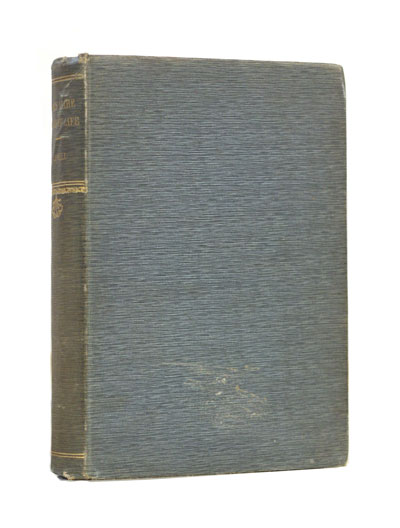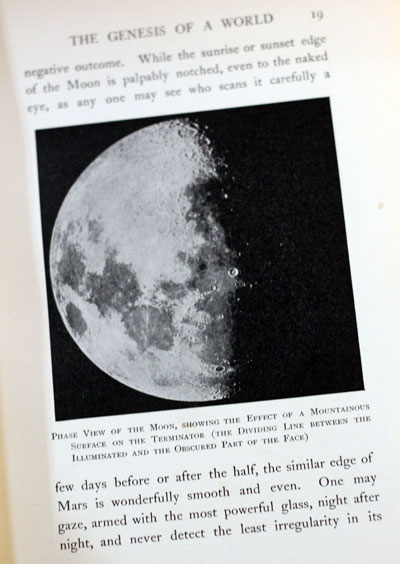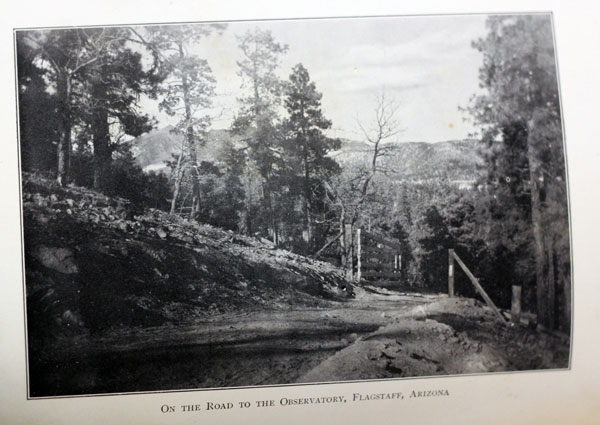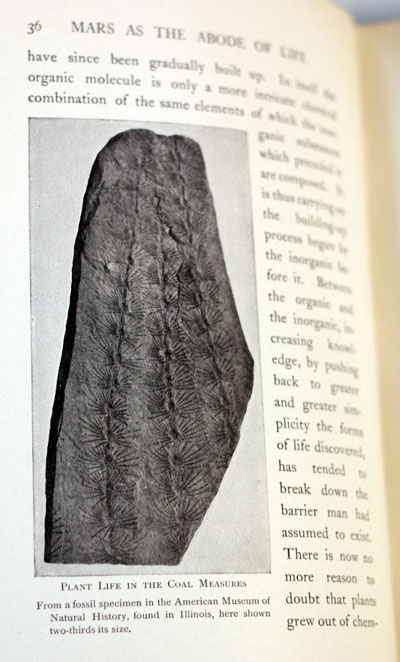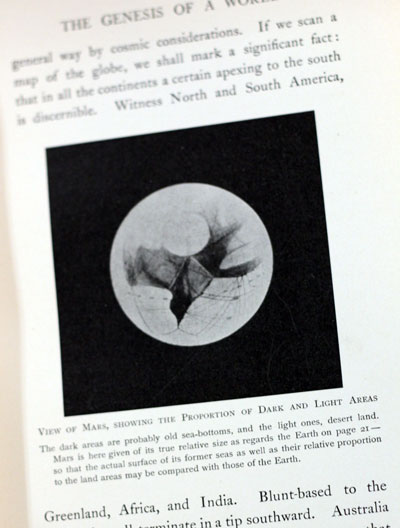About the book and the author (from wikipedia):
Percival Lawrence Lowell (March 13, 1855 – November 12, 1916) was an American businessman, author, mathematician, and astronomer who fueled speculation that there were canals on Mars. He founded the Lowell Observatory in Flagstaff, Arizona and formed the beginning of the effort that led to the discovery of Pluto 14 years after his death.
Lowell became determined to study Mars and astronomy as a full-time career after reading Camille Flammarion’s La planète Mars. He was particularly interested in the canals of Mars, as drawn by Italian astronomer Giovanni Schiaparelli, who was director of the Milan Observatory.
In 1894 Lowell chose Flagstaff, Arizona Territory, as the home of his new observatory. At an altitude of over 2,100 meters (6,900 feet), with few cloudy nights, and far from city lights, Flagstaff was an excellent site for astronomical observations. This marked the first time an observatory had been deliberately located in a remote, elevated place for optimal seeing.
For the next fifteen years he studied Mars extensively, and made intricate drawings of the surface markings as he perceived them. Lowell published his views in three books: Mars (1895), Mars and Its Canals (1906), and Mars As the Abode of Life (1908). With these writings, Lowell more than anyone else popularized the long-held belief that these markings showed that Mars sustained intelligent life forms.
His works include a detailed description of what he termed the ‘non-natural features’ of the planet’s surface, including especially a full account of the ‘canals,’ single and double; the ‘oases,’ as he termed the dark spots at their intersections; and the varying visibility of both, depending partly on the Martian seasons. He theorized that an advanced but desperate culture had built the canals to tap Mars’ polar ice caps, the last source of water on an inexorably drying planet.
While this idea excited the public, the astronomical community was skeptical. Many astronomers could not see these markings, and few believed that they were as extensive as Lowell claimed. As a result, Lowell and his observatory were largely ostracized. Although the consensus was that some actual features did exist which would account for these markings, in 1909 the sixty-inch Mount Wilson Observatory telescope in Southern California allowed closer observation of the structures Lowell had interpreted as canals, and revealed irregular geological features, probably the result of natural erosion.
The existence of canal-like features was definitively disproved in the 1960s by NASA’s Mariner missions. Mariner 4, 6, and 7, and the Mariner 9 orbiter (1972), did not capture images of canals but instead showed a cratered Martian surface. Today, the surface markings taken to be canals are regarded as an optical illusion.
Although Lowell’s theories of the Martian canals, of surface features on Venus, and of Planet X are now discredited, his practice of building observatories at the position where they would best function has been adopted as a principle. He also established the program and setting which made the discovery of Pluto by Clyde Tombaugh possible. Craters on the Moon and on Mars have been named after him. Lowell has been described by other planetary scientists as “the most influential popularizer of planetary science in America before Carl Sagan”.
While eventually disproved, Lowell’s vision of the Martian canals, as an artifact of an ancient civilization making a desperate last effort to survive, significantly influences the development of science fiction – starting with H. G. Wells’ influential The War of the Worlds, which made the further logical inference that creatures from a dying planet might seek to invade Earth.
The image of the dying Mars and its ancient culture was retained, in numerous versions and variations, in most science fiction works depicting Mars in the first half of the twentieth century. Even when proven to be factually mistaken, the vision of Mars derived from his theories remains enshrined in works that remain in print and widely read as classics of science fiction.
Lowell’s influence on science fiction remains strong. The canals figure prominently in Red Planet by Robert A. Heinlein (1949) and The Martian Chronicles by Ray Bradbury (1950). The canals, and even Lowell’s mausoleum, heavily influence The Gods of Mars (1918) by Edgar Rice Burroughs as well as all other books in the Barsoom series.
The Lowell Regio on Pluto was named in his honour.

